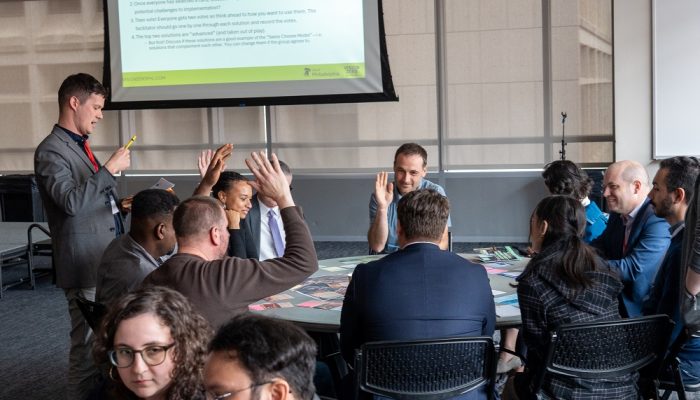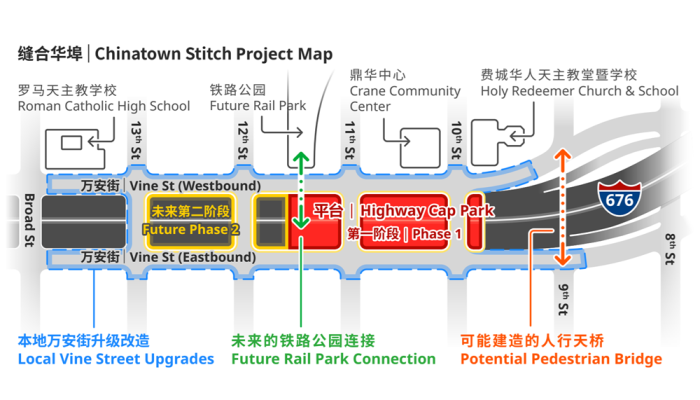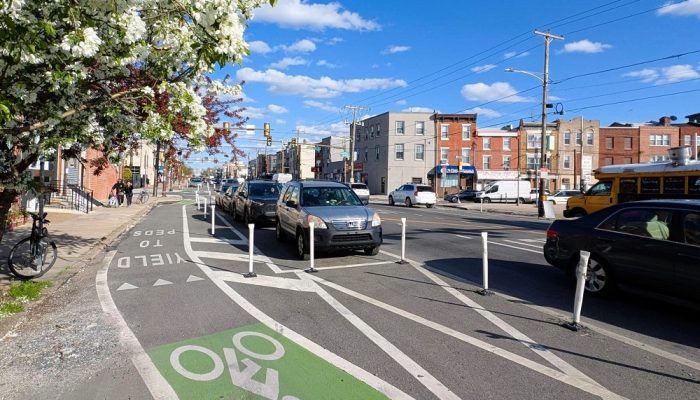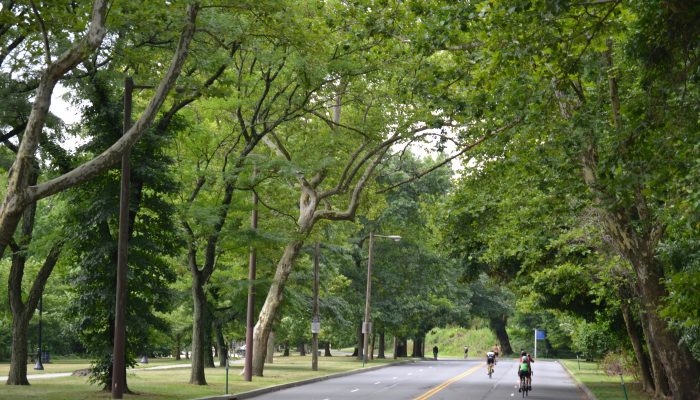Last week, the Office of Transportation and Infrastructure Systems (OTIS) and Office of Multimodal Planning (OMP) participated in the Vision Zero Conference PHL 2025 – a day-long event hosted by the Bicycle Coalition of Greater Philadelphia (BCGP) and featuring local and nationally-recognized speakers and panelists at Temple University.
The conference focused on the theme of “What’s the Cost of Vision Zero?” Conference panelists and attendees grappled with this question to better understand the human and capital costs of investment in traffic safety. Discussion panels at the conference covered many topics related to this theme, including:
- The “Neighbors Take the Wheel” panel explored safety projects initiated by community members. Moderated by Vision Zero Ambassador Chinita Bradshaw, the panel discussed the relationship between communities and their government in the context of several recent traffic safety projects in West and North Philadelphia.
- The panel “The Cost of Infrastructure, Pay Now or Later,” moderated by Greg Krykewycz from the Delaware Valley Regional Planning Commission (DVRPC), discussed the opportunities and challenges for a community to invest in transportation safety.
- In “Designing School Zones for Children,” moderated by Safe Routes Philly Coordinator Peter DeCarolis, panelists discussed their efforts around redesigning the streets near Philadelphia schools to be safer for the students using them.
Proposed City Budget Includes $5 Million for Vision Zero
Earlier this month, Mayor Cherelle L. Parker unveiled the “One Philly 2.0” Fiscal Year 2026 Budget and Five-Year Plan, which proposed a major funding increase for Vision Zero. Mayor Parker’s proposal detailed $5 million for FY26 and $30 million in capital investments through FY31 with $1.5 million of the proposed funding going toward speed cushions. The budget also includes another $5 million for separated bike lanes along Spruce and Pine streets, as well as to pay for additional line striping and other roadway safety markings for the Department of Streets.
This investment in traffic safety measures represents a down payment on the safety of Philadelphians, regardless of which mode of travel they choose. “Every Philadelphian deserves to be able to get home safely, no matter if they choose to travel by foot, by transit, by bike, or by personal vehicle,” Mayor Parker said of the proposal.
Vision Zero Supports Mayor’s Proposed Housing Plan
In her budget proposal, Mayor Parker also revealed her new housing plan, titled “Housing Opportunities Made Easy,” or H.O.M.E. Initiative. This proposed $2 billion program will create or preserve 30,000 homes in Philadelphia for both renters and homeowners alike. The H.O.M.E. Initiative is designed to provide safe, affordable housing for Philadelphians across the city and alleviate the housing crisis many Philadelphians are inflicted with today.
Vision Zero is a critical component of creating the safe, resilient communities that the H.O.M.E. Initiative seeks to deliver. When economists think about household costs, transportation and housing together make up the largest share. Vision Zero supports households that cannot afford a vehicle by making streets safe for walking, biking, and taking transit. Safe, walkable streets are essential to building strong communities where residents feel a sense of pride and ownership of their block. Vision Zero is critical to delivering on this promise.
Make Your Voice Heard! Participate in the 2030 Action Plan
To fulfill the directives in Mayor Parker’s 2024 Vision Zero Executive Order, OTIS will be releasing a new Five-Year Action Plan in fall of 2025. In preparation for the plan, OTIS has been meeting with community groups to hear feedback from residents on what Philadelphians want to see from Vision Zero over the next five years.
The Vision Zero Action Plan 2030 will guide Philadelphia’s traffic safety initiatives through the end of the decade. To be effective, both internal and external stakeholders will help write the plan. Feedback from community members is crucial. Whether you represent a community organization or yourself, we want to hear from you.




